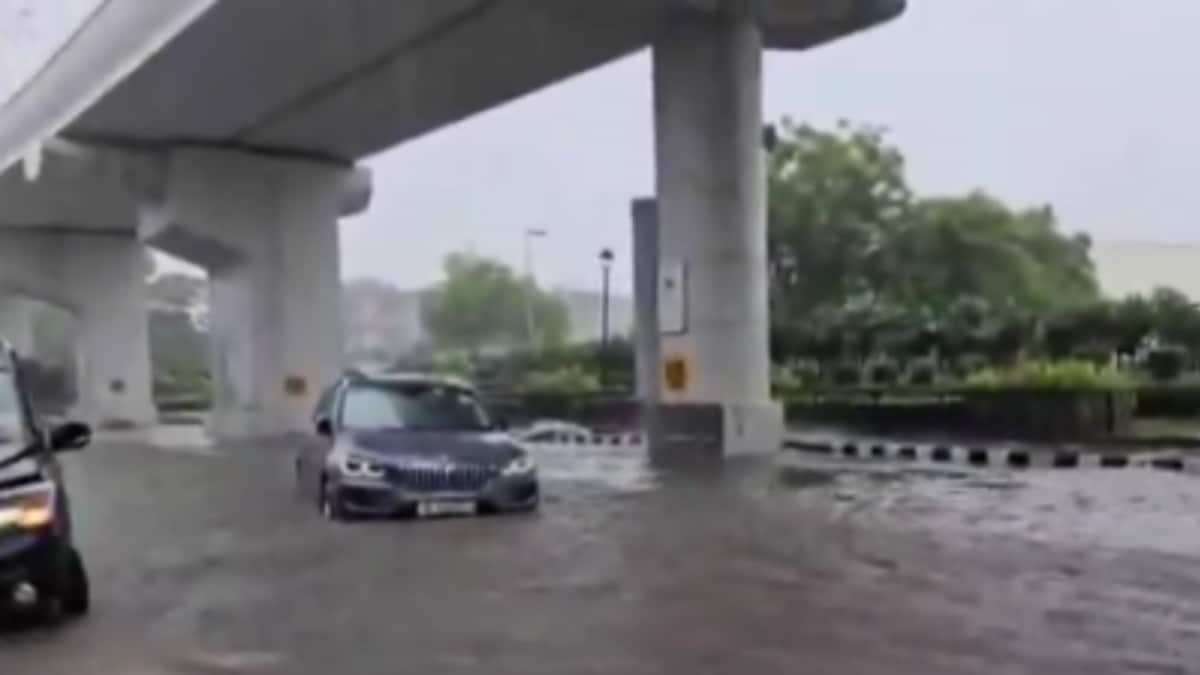 |
|
The recent heavy rainfall in Delhi has once again exposed the city's vulnerability to waterlogging, disrupting daily life and causing significant inconvenience to its residents. A stark visual representation of this disruption was captured in a video shared by news agency ANI, showing a BMW car stranded in the middle of a flooded road in APS Colony. The video quickly went viral, sparking a wave of online reactions ranging from frustration to sarcasm, highlighting the recurring nature of this problem during the monsoon season. The incident underscores the urgent need for improved infrastructure and drainage systems to mitigate the impact of heavy rainfall and ensure the smooth functioning of the city. The India Meteorological Department (IMD) had initially issued a yellow alert for Delhi but, due to the intensification of rain activity, upgraded it to a red alert, signifying the severity of the situation. The IMD has also predicted heavy showers in other parts of North India, including Haryana, Chandigarh, Punjab, Himachal Pradesh, Uttarakhand, North Madhya Pradesh, and West Uttar Pradesh, indicating a widespread weather phenomenon affecting a large geographical area. The stranded BMW serves as a potent symbol of the challenges faced by urban dwellers in the face of extreme weather events, prompting a renewed call for proactive measures to address the issue of waterlogging and its associated consequences. The reliance on 'unprecedented rainfall' as the reason for the flooding has been dismissed by many locals online. The social media response shows a collective frustration about the lack of preparedness from the administration and how this problem has been ignored year after year. The author of the news article, Manisha Roy, is a Senior Sub-Editor at News18.com and has been covering such problems that India faces over her 5 years in the media industry. The reliance on blaming the weather conditions as the reason for the waterlogging can be seen as a convenient excuse for the lack of foresight. The video of the BMW can also be seen as a reflection of the country's growing wealth inequality, where luxury cars get stuck in the same puddles as the average citizen's vehicle. The overall picture that this event paints is that while there are some Indians who are thriving, there are serious infrastructure problems that affect the majority of the population. The fact that this waterlogging occurs in the nation's capital reveals the depth of the problem, and highlights that the nation's progress is superficial.
The online reactions to the Delhi flooding reveal a deep-seated frustration among residents who have grown weary of the recurring monsoon woes. Many users took to social media platforms like X (formerly Twitter) to express their discontent with the city's drainage infrastructure and the perceived lack of preparedness by the authorities. One user, Monica Jasuja, sarcastically remarked that no one in Delhi was surprised by the flooding, highlighting the predictable nature of the situation. She further criticized the cycle of red alerts, flooded roads, traffic disruptions, and the subsequent blaming of 'unprecedented rainfall,' suggesting a lack of effective action to address the root causes of the problem. Another user, @libelousnine, emphasized the importance of proactive measures such as cleaning drains and ensuring proper drainage systems before the monsoon season. They pointed to the wisdom of the saying 'fix the roof when the sun is shining,' underscoring the need for timely and preventative action. The collective sentiment expressed online suggests a growing demand for accountability and a more proactive approach to managing the city's infrastructure. The social media commentary is a clear indicator of the public's dissatisfaction with the status quo and their desire for concrete solutions to the recurring problem of waterlogging. This incident acts as a reflection of the public's frustration and their lack of faith in their government officials who promise to solve the problem but ultimately never do. There is a sense of hopelessness in the online responses, with many people having accepted the fact that the waterlogging is simply a part of life. The question is how long will they continue to accept this problem and when will they take action to change it?
The India Meteorological Department's (IMD) prediction of heavy showers in multiple states across North India underscores the widespread impact of the current weather system. The red alert issued for Delhi highlights the severity of the situation in the national capital, while the prediction of heavy rainfall in Haryana, Chandigarh, Punjab, Himachal Pradesh, Uttarakhand, North Madhya Pradesh, and West Uttar Pradesh suggests a regional phenomenon affecting a large geographical area. This widespread weather event has the potential to cause significant disruptions to daily life, agriculture, and transportation in the affected states. The IMD's forecast serves as a crucial warning for residents and authorities to take necessary precautions to mitigate the potential impact of the heavy rainfall. This includes measures such as clearing drainage systems, avoiding travel in flooded areas, and ensuring the safety of vulnerable populations. The IMD's role in providing timely and accurate weather information is essential for enabling effective disaster preparedness and response. With the prediction of continued heavy showers in the coming hours, it is imperative that residents and authorities remain vigilant and take appropriate steps to minimize the potential risks associated with the weather event. This IMD warning highlights the need to always be prepared for extreme weather events and to heed the warnings from the weather experts. While waterlogging is currently a problem, other environmental events could happen at any time and any place. The IMD acts as a crucial service that can save lives.
Source: BMW Gets Stranded In The Middle Of Road As Heavy Rains Turn Delhi's Streets Into Stream | Video
